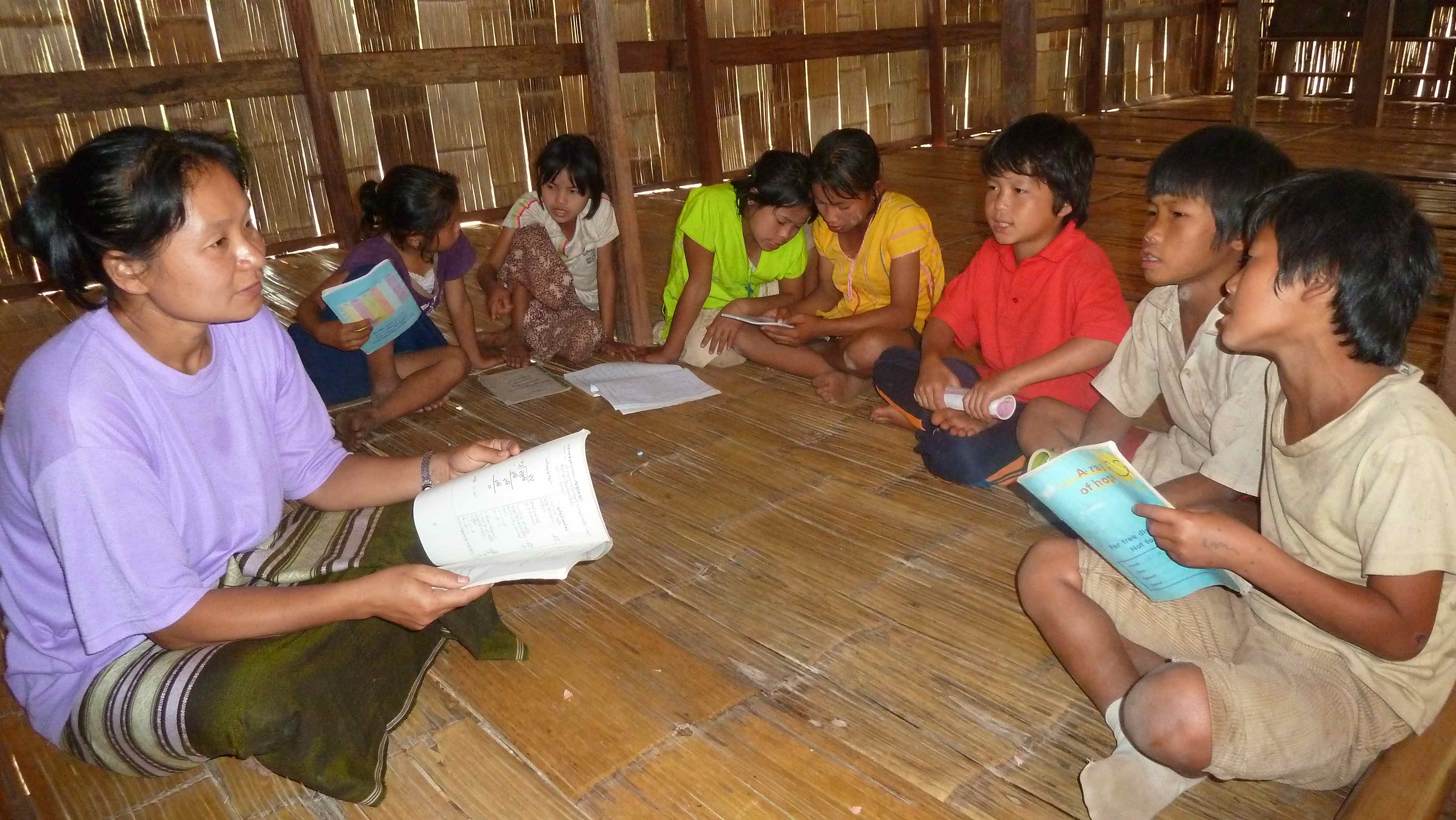"I need to learn more to be a teacher because I'd like my nation to become better educated."
But as Nea Po Chee and 40 classmates finish their half-day of learning in the one-room school, ethnic Karen soldiers load their weapons in a nearby field preparing for another attack by Burmese troops.
Sixteen months ago, the village was bombed and burnt down by government soldiers, leaving the villagers with nothing more than a few personal belongings as they fled their homes.
Constant displacement due to attacks by Burmese troops has left generations of children without a proper formal education - let alone a normal childhood, say aid workers.
"Thousands of children are completely missing out on an education," explains Sally Thompson, deputy executive director of the Thai Burmese Border Consortium (TBBC).
"In cases where they are on the run, the children often resort to learning in a jungle school which might simply be a blackboard set up under a tree, taught by older students."
Displaced
In 2009, more than 110,000 villagers in eastern Myanmar were displaced by military action, according to the TBBC.
In the same area, between 2002 and the end of last year, more than 580,000 civilians, most of them children, were forced from their homes, the group said.
"I'd say there were as many as 30,000 persons displaced after the elections and many of them came across the border to the Thai side. In some parts of eastern Burma the education system has basically collapsed," Thompson added.
Government spending on education and health is the lowest in the region at just 1.6 percent of Myanmar's gross domestic product, a 2009 TBBC report, Protracted Displacement and Militarization in Eastern Burma, said.
Much of the area remains without basic infrastructure such as roads and electricity following fighting between the ethnic Karen National Union, which has been seeking independence for decades, and the military government.
|
Photo: Steve Sandford/IRIN  |
| Karen soldiers on patrol near the Thai border |
Children often drop out of school to scavenge for shelter and food.
Compounding problems further, in rural eastern Myanmar, more than 40 percent of children under five suffer from acute malnutrition, according to the Mae Tao Clinic, which operates an emergency medical centre in the Thai border town of Mae Sot.
Schools under fire
Attacks on schools remained a major concern last year, others say.
According to the Watchlist on Children and Armed Conflict, Burmese forces have occupied educational facilities for military purposes, recruited teachers and students for forced labour, and planted landmines close to or on the paths to schools.
The army has also reportedly set fire to whole villages - including schools - to prevent people from returning, the group says.
And as the danger for teachers increase, interest in working in the area decreases.
"We are scared of attacks from the SPDC [State Peace and Development Council government forces]. We have to move five or six times when our village comes under fire from the SPDC," explains head instructor Eh Thwa. "Here the salary is very low, so many teachers are uninterested to work in such a difficult location."
Meanwhile, there are no signs of the difficulties letting up, following the 7 November elections, described by many as a sham.
Fighting is expected to increase as many ethnic groups have refused to lay down their arms and join the government's border guard forces.
Still, for Eh Thwa, there remains a glimmer of hope. "If the situation is good and we have peace and democracy, I think it will develop."
But just one day after IRIN visited Oo Kray Kee, her one-room school was closed down and most of the village's 300 residents were again on the run, living beneath plastic sheets in the jungle.
ss/ds/mw
This article was produced by IRIN News while it was part of the United Nations Office for the Coordination of Humanitarian Affairs. Please send queries on copyright or liability to the UN. For more information: https://shop.un.org/rights-permissions




